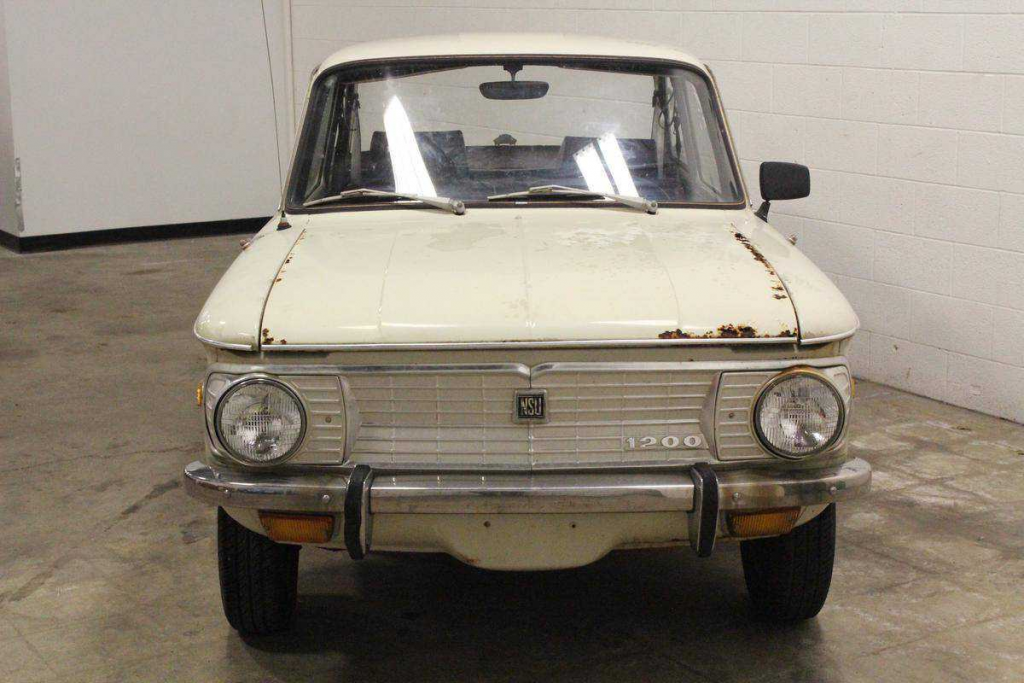In celebration of its 150-year milestone since the inception of manufacturing in Neckarsulm, Audi has undertaken a remarkable project. This historic location, which initially specialized in knitting machines, has evolved to become a renowned assembly site for various Audi models, including the iconic Audi A4.
To mark this significant anniversary, Audi’s team of trainees has undertaken a unique endeavor by transforming a 1971 NSU Prinz 4 into an electrifying sports car. The dedicated apprentices skillfully widened the vehicle’s square body and incorporated contemporary elements such as LED lighting, blending the classic aesthetics with modern design cues.
In a notable departure from the original two-cylinder engine, the skilled apprentices integrated a robust 240-hp electric motor sourced from an Audi e-tron. This powerful electric motor is seamlessly connected to the battery system derived from a plug-in-hybrid Q7 SUV, ensuring an enhanced and sustainable driving experience.

Electric Restomod Project by Audi Apprentices to Celebrate 150th Anniversary of Neckarsulm Factory Site
In reminiscence of nostalgic school science projects, a remarkable undertaking was recently assigned to a group of 12 Audi apprentices. Their task involved creating an electric restomod as a tribute to the 150th anniversary of Audi’s factory site in Neckarsulm, Germany, which originally manufactured knitting machines back in 1873. The culmination of their efforts was unveiled last weekend in the form of the captivating Audi EP4 concept.
The project commenced in January with the restoration of a neglected 1971 NSU Prinz 4, which had remained dormant for several decades. NSU, an esteemed German automaker, was integrated into Volkswagen in 1969 and later merged with Auto Union to form the renowned Audi brand we recognize today. The NSU Prinz was assembled in Neckarsulm from 1961 to 1973, making it an ideal canvas for this celebratory reinterpretation.
While retaining the distinct boxy shape and prominent beltline of the original Prinz, the apprentices meticulously reimagined various details. Circular headlights were replaced by sleek oval LED units, while the front bumper was enhanced with a splitter and a sizeable air intake, channeled through a hood vent. Vibrant Signal Yellow accents contrast against the Suzuka Grey paint, and an eye-catching rear wing emerges from the roof’s trailing edge, mounted directly to the roll cage with support beams passing through the rear window.
Beyond addressing rust spots and reinforcing the half-century-old chassis, the apprentices removed the original 30-horsepower two-cylinder gasoline engine from the rear compartment and substituted it with a potent 240-horsepower electric motor sourced from a 2020 Audi e-tron. Although the weight of the motor is concentrated in the car’s rear, it is balanced by the battery, which now resides under the hood in the location once occupied by the fuel tank. The apprentices utilized a 17.9-kilowatt-hour battery obtained from an Audi Q7 plug-in-hybrid SUV.
The increased power necessitated structural modifications. The floor plan, including the brakes and axles, was borrowed from an Audi A1, while wider 3D-printed fenders were introduced to accommodate the classic white wheels and high-performance tires. Notably, the trunk can be partially opened to allow cool air intake, while also showcasing the electric powertrain. It is important to mention that the EP4 concept does not directly influence future Audi models. Nevertheless, this captivating project car underscores the potential of the next generation of Audi designers and engineers.
